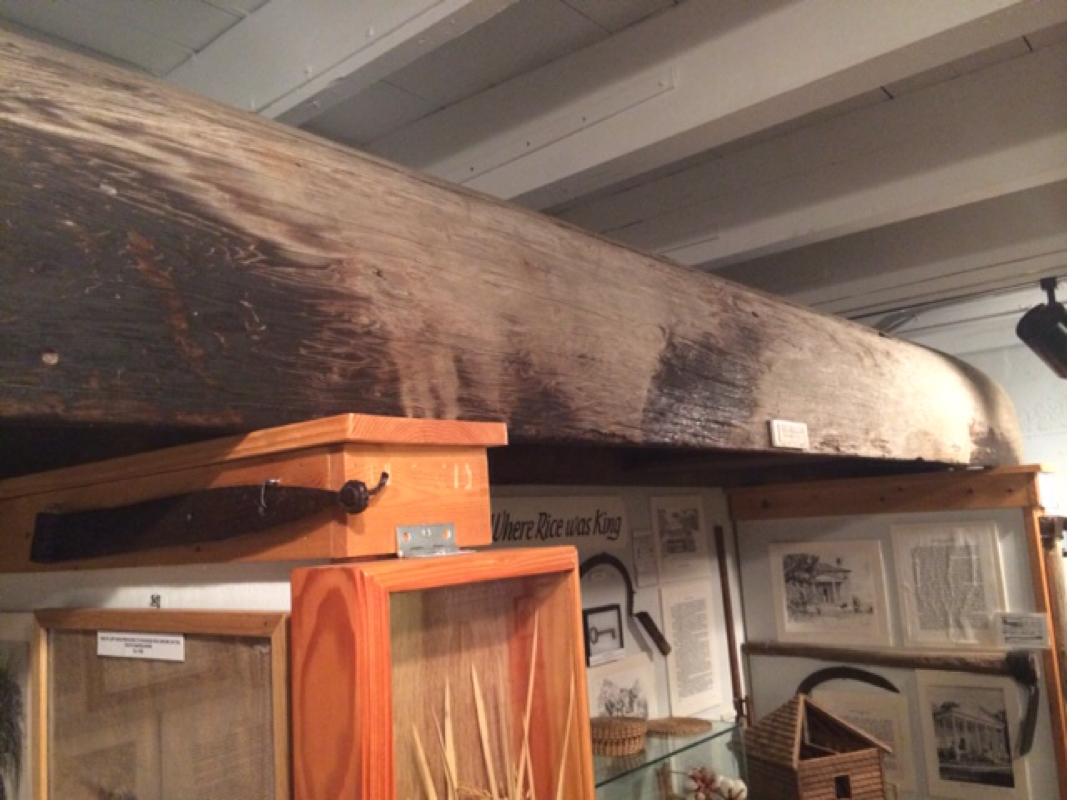John Lawson spent the first week of his journey to North Caroline from Charleston in a canoe, travelling through the what is now called the Inland Passage -- the complex, all but trackless series of tidal creeks among the marshes and barrier islands off the South Carolina coast.
Here is what he had to say about tides: he mentions that as his group got started, they got int the canoe, "having the Tide of Ebb along with us" they set out. This makes sense -- from Charleston the journey across the bay into the tidal marshes is towards the sea, so if you don't catch the tide going out you're figthing the sea. He mentions that when his gang of ten passengers made the five miles to the inlet called The Breach the tide had gone out so far they couldn't get in over the breach -- the passage between two islands that then gave access to the tidal marshes. And he mentions, a couple days later, that they are nearly cast away when a gale comes up, but fortunately there was "a strong Furrent of a Tide setting in and out," which, whatever that means, somehow set them aright and gave them shelter in a part of Bull's Bay.
That's it. Six days of paddling in creeks and water so confusing and unpredictable, so hard to predict, that one of my own guides -- she makes her living paddling these waters -- has said she just lets the tides do what they will.
But let me promise you -- paddling against the tide is a different project than paddling wih the tide, though Elizabegth was certainly right -- in a system with tidal creeks inerconnecting and leading to and from inlets, which way the current will flow in a particular creek during a particular tidal flow is a mug's game.
Wind is a different matter entirely. My first-day guide, Ed Deal, piloted his kayak all but effortlessly regardless of wind. Low in the water and hydrodynamically sound, his kayak seemingly kept him under the wind, gliding along like a water strider.
My canoe not so much. Tall and with a flad bottom, the canoe carries gear like a wonderful pack mule but it runs like one too. When at the end of our day we ran into a stiff headwind -- I estimate it Beaufort 5, "small trees in leaf begin to sway" -- I had all I could do to make forward progress. "You are a sailboat," Ed said. "And you are the sail."
In any case this comes back to Lawson because my first conclusion on this project is that Lawson did not paddle his canoe -- not once. I'm convinced he did not pick up a paddle. After two days in a canoe in the nice conveniently straight Intracoastal Waterway, I'm constantly thinking about tides and winds, and Lawson barely mentions them. That tells me that his four native guides and five friends did much of the work while Lawson jotted down notes.
So from the beginning of the Lawson Trek may I start by saying: I am jealous of John Lawson. I love the big green honker provided for me by Kathie Livingston at Nature Adventure Outfitters, and I'm loving making my way up the waterway. Two little blisters so far, by the way. I use a kayak paddle which gives me enormous control but fills my canoe with water, which I pump and sponge out. Kathie's also provided guides, who've filled me with information and understanding. My new true love is Spartina alterniflora, and more about that soon.

But my major take-home from my first to days is: it's better to have nine OTHER people paddling your canoe than to paddle it yourself. Nine other people versus one YOU person. You do the math.
Lawson of course would have used a dugout canoe, and I got a wonderful lesson in dugout creation from But Hill of the Village Museum in McClellanville, which has an old dugout found in the local mud.
The native Americans made the dugouts by burning a log -- cypress, commonly -- on one side, then scooping out the charred part, then burning more, and so on in enough cycles until you had the canoe you wanted.
The colonists added elegance, Bud explained by pointing out a circular hole in the old canoe. They drilled holes and put in a dowel of the thickness they wanted the hull to have at any particular point, he said. Then you burned and chiseled until you hit the dowel. Presto -- a canoe hull exactly as thick as you wanted it to be.
They also left in seat supports, chiseling out around little shelves. Thus the seat, instead of being attached sideways, which was a weak point of attachment and even pushed out against the sides of the boat, which then wanted to crack in the middle, became a point of support. The seat stayed in, pegged in from the top instead of the side, and the seat thus pegged provided force holding the sides together rather than pushing them apart.
People have been smart for a long time.



 RSS Feed
RSS Feed